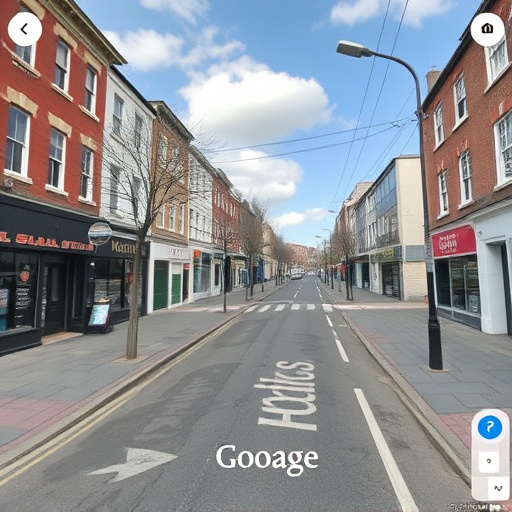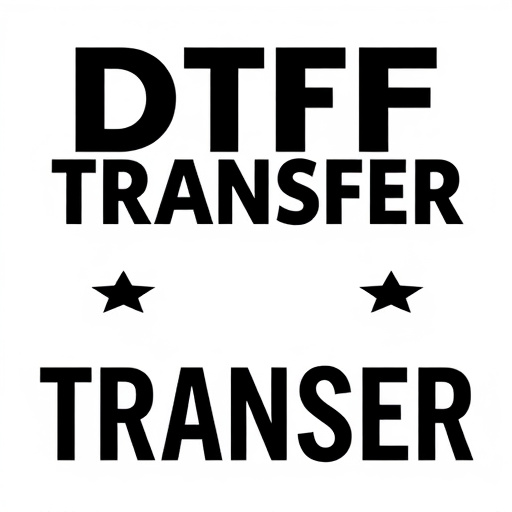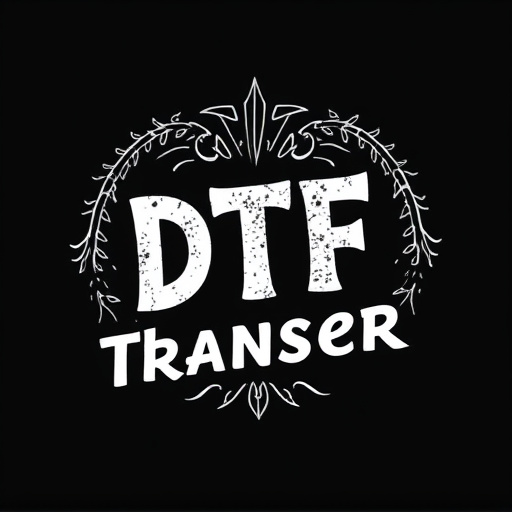Direct to Fabric (DTF) transfers and printing technologies revolutionize dark fabric design with vibrant, high-quality prints. This process involves preparing graphic designs digitally and then precisely depositing specialized DTF inks onto a carrier sheet before transferring them directly to the fabric. The result is a crisp, accurate replication of intricate patterns on darker materials, offering endless creative possibilities in fashion, home decor, and art. DTF printing's versatility, durability, and ability to produce striking contrasts make it a popular choice for custom products and memorable visual communications across industries.
In the world of graphic design and printing, DTF Transfers are revolutionizing the way we bring vibrant visuals to dark-colored fabrics. This innovative process allows for stunning, high-quality prints that pop against deep backgrounds, transforming ordinary garments into eye-catching displays. From fashion to sportswear, DTF Printing offers a game-changer, enabling businesses to create unique, durable designs with unmatched color vibrancy. Discover the science behind this technique, explore its diverse applications, and learn how to ensure long-lasting results.
- Understanding DTF Transfers: A Comprehensive Overview
- The Appeal of Vibrant Colors on Dark Fabrics
- DTF Printing Process: How It Works
- Choosing the Right DTF Transfer for Your Fabric
- Applications and Benefits in Various Industries
- Ensuring Longevity and Quality of DTF Prints
Understanding DTF Transfers: A Comprehensive Overview

DTF Transfers, or Direct to Fabric (DTF) transfers, represent a revolutionary printing method designed specifically for application on dark-colored fabrics. Unlike traditional printing techniques that often struggle with opacity on darker surfaces, DTF Transfers offer an innovative solution by utilizing special inks and a direct application process. This approach ensures vibrant, high-quality prints that truly pop against the contrast of dark fabrics, making them ideal for various apparel and textile projects.
The DTF Printing process involves several key steps. First, graphic designs are meticulously prepared for printing, considering factors like color profiles and resolution to guarantee optimal results. Then, special DTF inks are precisely deposited onto a carrier sheet, creating a thin, flexible layer containing the desired image. Finally, this carrier sheet is pressed directly against the dark fabric, transferring the ink and creating a crisp, vibrant print. This method not only preserves the depth of colors but also allows for intricate designs and detailed imagery to be replicated accurately on darker materials, opening up endless possibilities for creative expression in the textile industry.
The Appeal of Vibrant Colors on Dark Fabrics
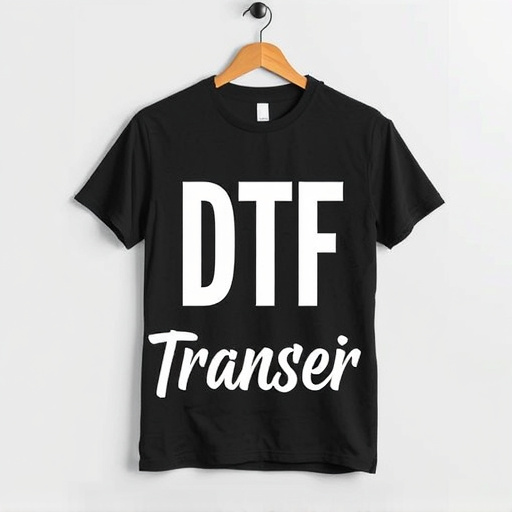
The appeal of vibrant colors on dark-colored fabrics lies in the dramatic contrast they create, transforming ordinary garments into eye-catching statements. DTF (Direct to Fabric) Transfer and DTF Printing technologies have revolutionized the way we approach fabric customization, enabling designers and enthusiasts to produce bold and intricate DTF prints that truly pop against deep hues. This technique allows for a wide range of colors and patterns to be applied directly onto dark fabrics, opening up endless possibilities for creative expression.
With DTF Transfers, achieving vivid and durable designs on black or dark-hued materials is now accessible. These transfers are designed to lock in vibrancy, ensuring the original richness of the fabric color remains intact while adding a burst of life. Whether it’s fashion, home decor, or art, incorporating vibrant DTF prints onto dark fabrics offers a unique and modern aesthetic that captivates audiences.
DTF Printing Process: How It Works

The Direct to Fabric (DTF) printing process is a cutting-edge technique revolutionizing the way transfers are applied to dark fabrics, ensuring vibrant and lasting results. Unlike traditional methods, DTF involves transferring ink directly onto the fabric’s surface, eliminating the need for intermediate papers or films. This direct approach allows for remarkable color accuracy and brightness on even the darkest garments.
In this method, a special printer uses heat to activate the ink, fusing it into the fabric fibers. The process starts with preparing the design digitally, ensuring it’s optimized for DTF printing. Then, the design is printed onto a transfer paper using solvent or UV-curable ink. Once dry, the transfer is carefully applied to the fabric, where heat and pressure activate the ink, creating a permanent bond. This technique has gained popularity due to its ability to produce high-quality, vibrant DTF prints that truly pop on dark fabrics, making it a game-changer in the textile industry.
Choosing the Right DTF Transfer for Your Fabric

When selecting a DTF (Direct to Fabric) transfer for your dark-colored fabric project, understanding the qualities of different transfers is key. These transfers come in various types, each optimized for specific fabrics and printing techniques. For instance, some DTF prints are designed for light-colored garments and may not produce vibrant effects on darker fabrics due to ink absorption disparities. Therefore, choosing a transfer specifically formulated for dark fabrics ensures optimal results.
Specialized DTF transfers for dark fabrics often incorporate advanced ink formulas that offer superior color pop and contrast. These inks are engineered to cling strongly to the fabric’s surface, ensuring the design is vibrant and long-lasting. Whether you’re creating custom t-shirts, hoodies, or other apparel items, selecting a transfer tailored to your dark fabric will ensure your final product looks as intended, making your designs truly stand out.
Applications and Benefits in Various Industries
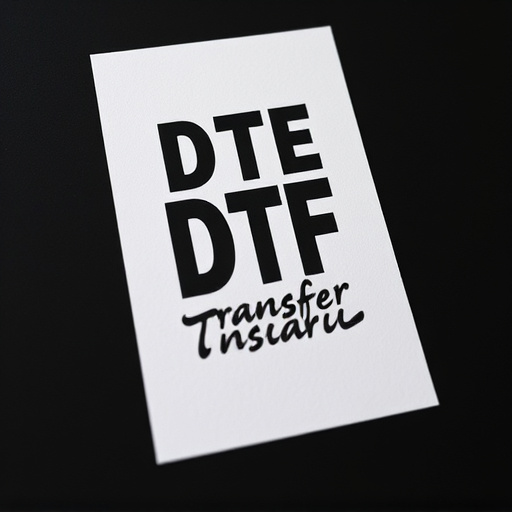
Transfers designed with Digital Thermal Transfer (DTF) technology have found widespread applications across various industries due to their ability to produce vibrant, high-quality prints on dark fabrics. DTF Transfers are particularly valuable in sectors like apparel and textiles, where creating visually appealing designs on black or deeply pigmented materials is essential. The process involves transferring heat-sensitive ink from a donor sheet to the receiving fabric, resulting in rich, vivid colors that do not fade easily.
Beyond fashion, DTF Printing has gained traction in promotional products, allowing businesses to create custom, eye-catching items like t-shirts, caps, and bags. Even industries such as signage and graphics benefit from DTF Transfers for producing durable, long-lasting prints on a variety of dark-colored surfaces. This versatility makes DTF technology an attractive option for creating memorable and impactful visual communications across multiple domains.
Ensuring Longevity and Quality of DTF Prints
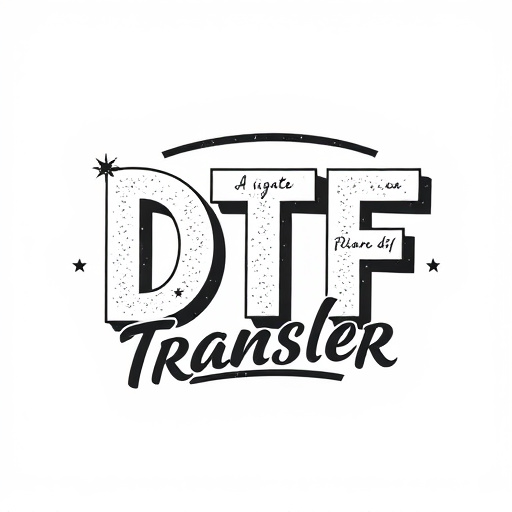
To ensure the longevity and quality of DTF (Direct to Fabric) prints on dark-colored fabrics, several factors need careful consideration. The first step is choosing the right inks compatible with DTF Printing. High-quality, vibrant inks designed specifically for darker surfaces can significantly enhance the print’s durability and color intensity. Proper ink selection ensures that the colors remain rich and do not fade over time, preserving the initial vibrancy of the design.
Additionally, the printing process itself plays a crucial role in print longevity. Ensuring optimal print settings, including proper temperature and pressure during application, is essential. These factors directly impact the bond strength between the transfer and fabric, affecting the overall durability of the print. Regular maintenance and care of printing equipment can also contribute to consistent high-quality outputs, extending the lifespan of DTF Prints on dark fabrics.






